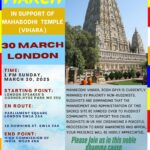
THE ORIGIN OF THE VEDAS – THE BRAHMINIC EXPLANATION OR AN EXERCISE IN THE ART OF CIRCUMLOCUTION
-Dr. B. R. Ambedkar
There is hardly any Hindu who does not regard the Vedas as the most sacred Book of his religion. And yet ask any Hindu what is the origin of the Vedas and it would be difficult to find one who can give a clear and a definite answer to the simple question. Of course, if the question was addressed to a Vedic Brahmin he would say that the Vedas are Sanatan. But this is no answer to the question. For first of all what does the word Sanatan means?
The best explanation of the word Sanatan is to be found in the Commentary by Kalluka Bhatt on Chapter I Shlokas 22-23 of the Manu Smriti. This is what Kulluka Bhatt defines the word Sanatan1 .
“The word Sanatana he says, means ‘eternally pre-existing’. The doctrine of the superhuman origin of the Vedas is maintained by Manu. The same Vedas which (existed) in the previous mundane era (Kalpa) were preserved in the memory of the omniscient Brahma, who was one with the supreme spirit. It was those same Vedas that, in the beginning of the present Kalpa, he drew forth from Agni, Vayu and Surya; and this dogma, which is founded upon the Veda, is not to be questioned, for the Veda says, ‘the Rig-Veda comes from Agni, the Yajur-Veda from Vayu, and the Sama-Veda from Surya.”
To understand the explanation by Kulluka Bhatt it is necessary to explain what Kalpa means.
A Kalpa is a reckoning of time adopted by the Vedic Brahmins. The Brahmanic reckoning of time divides time into (1) Varsha, (2) Yuga, (3) Mahayuga, (4) Manvantara and (5) Kalpa.
Varsha is easy enough to understand. It corresponds to the term year.
What exactly the period of time covered by the term Yuga covers there is no unanimity.
A Mahayuga is a period covered by a group of four Yugas: (1) Krita Yuga, (2) Treta Yuga, (3) Dwapar Yuga and (4) Kali Yuga. The four Yugas follow one another in a cycle, when the period of the first Yuga is spent it is followed by the second and so on in the order given. When the cycle is complete one Mahayuga is completed and a new Mahayuga opens. Every Mahayuga begins with the Krita Yuga and ends with Kali Yuga.
There is no uncertainty as to the time relation of a Mahayuga and a Kalpa. 71 Mahayugas make one Kalpa. There is however some uncertainty as to the time relation between Mahayuga and Manvantara. A Manvantara is equal to 71 Mahayugas “and something more”. What exact period of time that ‘something more’ means, the Brahmins have not been able to state categorically. Consequently the time relation between Manvantara and Kalpa is uncertain.
But this does not matter very much for our present purposes. For the present it is enough to confine our attention to Kalpa.
The idea underlying ‘Kalpa’ is closely connected with the creation and dissolution of the Universe. The creation of the world is called Srashti. The dissolution of the universe is called Pralaya. Time between Srashti and Pralaya is called Kalpa. The idea of the origin of the Vedas is thus more intimately connected with the idea of Kalpa.
According to this scheme of things, what is supposed to happen is that when a Kalpa begins creation begins. With the beginning of the creation there comes into being a new series of Vedas. What Kulluka Bhatt wants to convey is that though in a sense every new Kalpa has a new series of Vedas the same old Vedas are reproduced by Brahma from his memory. That is why he says the Vedas are Sanatan i.e., eternally pre-existing.
What Kalluka Bhatt says is that the Vedas are reproduced from memory. The real question is who made them and not who reproduced them. Even if one accepts the theory of reproduction at the beginning of each Kalpa the question still remains who made the Vedas when the first Kalpa began. The Vedas could not have come into being ex-nihilo. They must have a beginning though they may have no end. Why don’t the Brahmins say openly? Why this circumlocution?
—————————————————————————————————————-
1. Muir Sanskrit Texts Vol. III. p. 6
We have found 72 pages dealing with the subject “Origin of the Vedas”. These pages were neither arranged properly nor paged either by the typist or by the author. We have attempted to organize and arrange all these loose papers systematically and divide them into the Riddle No. 2 to 6, in accordance with the arrangement given in the Table of contents. It is difficult to assume that all these pages are complete in the treatment of the subject of each Chapter.
There is, however, one independent chapter containing 61 pages under the title ‘Riddle of the Vedas’ placed as Appendix I. That essay deals with all the subjects mentioned in the Table of Contents at Sr. No. 2 to 6 in a consolidated manner. Several paras may be found repeated in that essay. The original MS of the chapters 2 to 6 included here bears corrections and modifications in the handwriting of the author, whereas the Chapter included as Appendix I is a typed second copy having no corrections at all. We have followed the chronology of the Table of contents and the pages of corrected MS are arranged accordingly. —Ed.(BAWAS)





